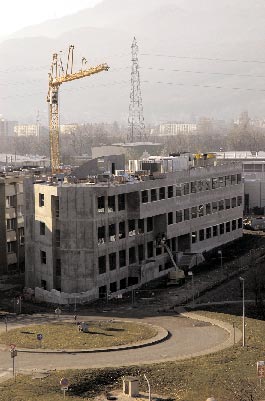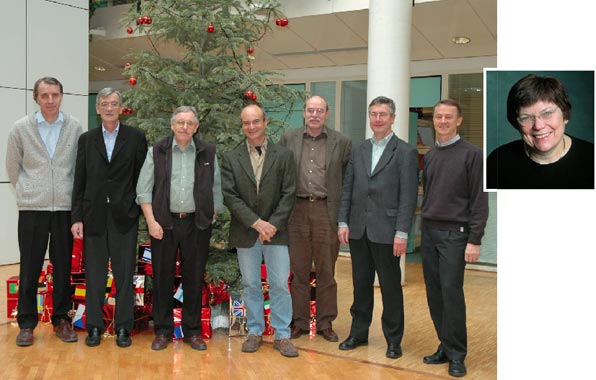Introduction
This has been a year of records for the ESRF. In 2004, a record number (1675) of proposals was received by our User Office. This corresponds to a total of 26251 shifts requested across all of the ESRF's beamlines. Scientific output also continues to grow. Staff at the ILL-ESRF library have identified almost 1200 refereed articles published during 2003, referring to work carried out at the ESRF. These scientific achievements were supported by an excellent Machine performance, with the longest recorded period of beam delivery without interruption: during December, the beam was maintained in 16-bunch mode for 288 hours (12 days) without a single beam trip, despite 48 refills followed by beam cleaning. Beam availability in 2004 equalled that of 2003, reaching 97.95%. Industrial interest in the ESRF was also at unmatched levels with the highest number of requests for industrial beamtime and the largest turnover for the Industrial and Commercial Unit.
As in previous years a vigorous programme of beamline renewal and improvement was pursued. A noteworthy event was the installation of an infrared beam port on BM21. The "edge radiation", emitted when electrons enter the bending magnet, is collected and transmitted to the infrared microscopy station at ID21. The high brilliance of the edge radiation leads us to expect that this facility should be competitive with the new 2 to 3 GeV light sources, despite the higher electron energy at the ESRF. Full commissioning of the infrared microscopy station will take place during the early part of 2005.
Rapid progress has been made with the Partnership for Structural Biology. Not only are the scientific collaborations central to this partnership now producing new science, but also the second branch of the new beamline ID23 for high-throughput, microfocus-beam macromolecular crystallography is at a very advanced stage of construction, and the shell of the PSB laboratory building is almost complete.
Records were also broken where computing resources are concerned. The 30 public and 11 CRG beamlines have again generated a record volume of data in 2004 with a total of about 110 Terabytes in some 55 million files. The daily data production reached 1 Terabyte/day at the end of the year, reflecting the increased efficiency of the beamlines and the use of high-resolution detectors.
This was also a year of anniversaries, foremost among which was the tenth anniversary, on 30 September, of the start of User operation. This important milestone for the ESRF was celebrated by a special edition of the Newsletter in December. Where administrative matters are concerned it is important to note that on 1 July, Poland became the latest Scientific Associate, bringing to 18 the number of national partners. During the year, extensions of the Arrangements with Israel and the Czech Republic were also signed. Furthermore, work continued apace on the development of the Long Term Strategy, an essential programme for renewal of the ESRF over the next five to ten years.
 |
The PSB laboratory/office building on 10 January 2005. |
The Highlights 2004 document provides a comprehensive summary of the excellent science produced at the ESRF by scientists from around the world. While this is primarily a showcase for the remarkably wide variety of scientific topics investigated using synchrotron X-rays at the ESRF, there is also a final "Facts and Figures" section that provides a concise summary of activities at the ESRF throughout 2004. We hope that you enjoy reading the Highlights of 2004 and we look forward to a scientifically successful future for the ESRF.
W.G. Stirling, P. Elleaume, R. Dimper, H. Krech, S. Larsen, F. Sette, P. Thiry, K. Witte
(January 2005)




